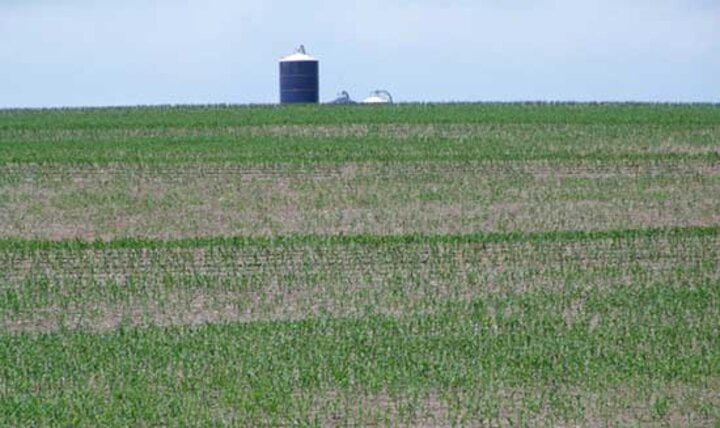
|
| Figure 1. Severe stand loss has been observed on the sides of terraces (pictured) and hillsides. |
June 8, 2007
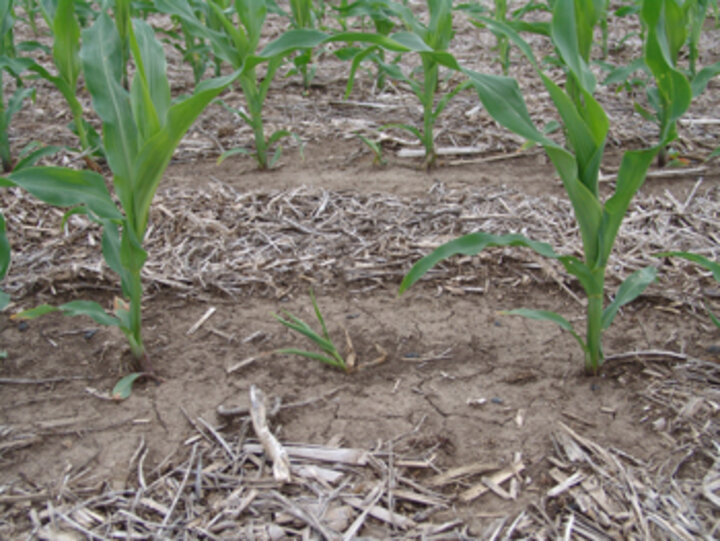
|
| Figure 2. Diseased plants can often appear stunted. |
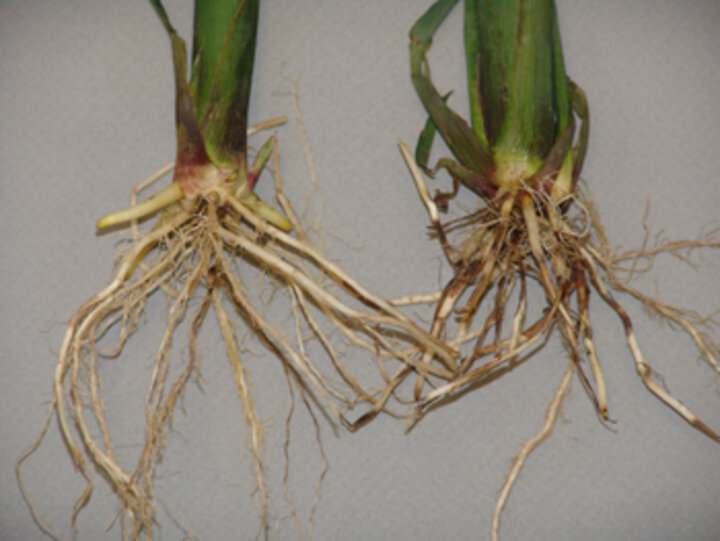
|
| Figure 3. Lesions on rotted roots (right) compared to roots on a healthy plant. |
The new corn crop has gotten off to a rough start this season in many areas of Nebraska. Frequent rains have maintained prolonged moist soil conditions and stressed seedling corn. As a result, seedling diseases have been reported across several counties in the eastern and southern portions of the state and numerous samples have been submitted to the UNL Plant and Pest Diagnostic Clinic.
Some reported damage on the sides of terraces and hillsides (Figure 1) has been severe enough to require replanting. See the story in this week's CropWatch for further information on replanting decisions.
So far, Fusarium spp. have been the most common pathogens isolated from diseased plants (Figures 2), with Rhizoctonia sp. also being a major contributor. Plants have exhibited varying degrees of stunting accompanied by crown and root rot (Figure 3). Most corn seed is treated with multiple fungicides varying in their modes of action and fungal specificity. At least one of these products is usually either Captan or fludioxonil, which are broad spectrum fungicides and should be effective against Fusarium spp.
This year, root and crown rot has frequently been observed in association with insect feeding injury. Wounds created by insect feeding can be used by pathogens for easier entry into the plant, but it's unclear whether pathogen infection or insect injury occurred first in these plants and should be blamed as the primary problem in these fields.
Wet planting conditions and heavy rain also have contributed to the development of rootless corn syndrome (Figures 3 and 4) in some fields. See the June 16, 2000 CropWatch story, Rootless Corn Syndrome — Finding the Cause, by Elmore, Roeth, and Wright for more information on this.
Tamra A. Jackson
Extension Plant Pathologist
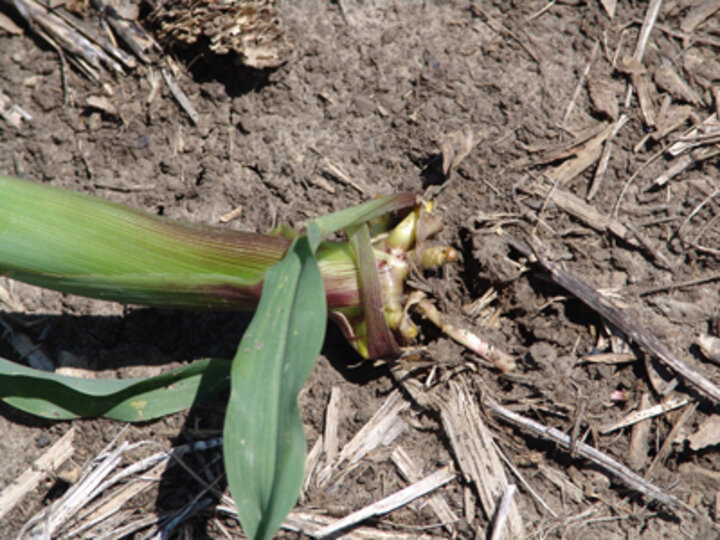
|
| Figure 4. Fallen plant due to rootless corn syndrome. |
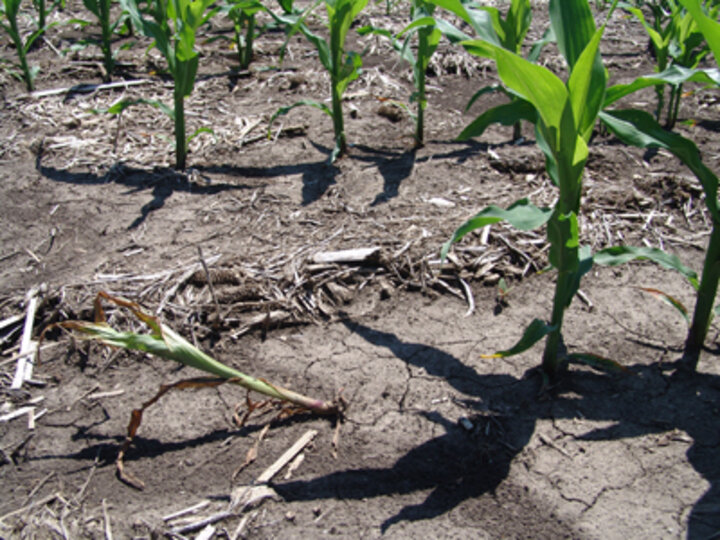
|
| Figure 5. Rootless corn. |
